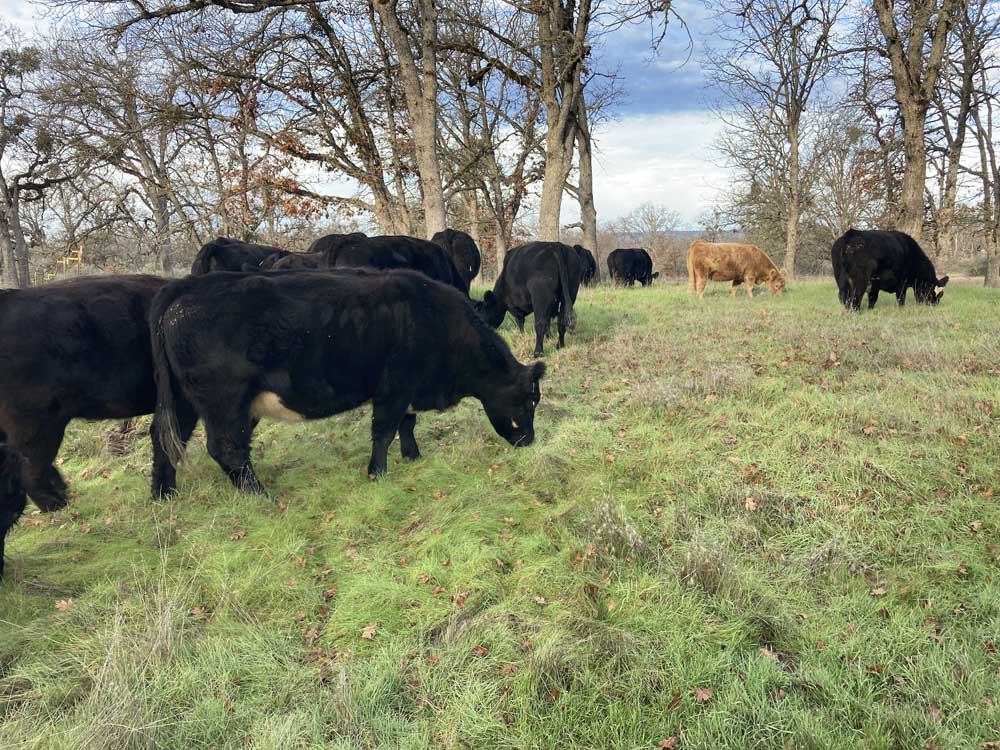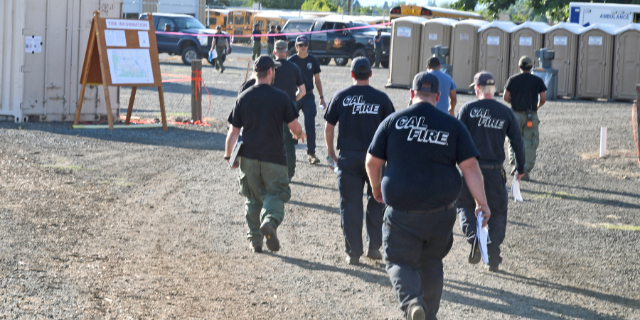Conservancy using cattle at White City-area preserve to eat non-native grasses
Published 10:45 am Friday, January 19, 2024

- Cattle graze at Whetstone Savanna Preserve near White City shortly after their arrival last month. The Southern Oregon Land Conservancy, which owns the 144-acre preserve, is using 22 cattle to eat non-native grasses, utilizing a practice known as restoration grazing.
Cattle grazing and sensitive habitat aren’t always compatible, but they are this month at the 144-acre Whetstone Savanna Preserve near White City, where landowner Southern Oregon Land Conservancy is using the animals to eat non-native grasses, in a practice known as “restoration grazing.”
Trending
Kristi Mergenthaler, stewardship director for the Conservancy, said non-native grasses at the preserve can form a layer similar to a shag carpet, choking out native grasses.
“Eventually, you start losing native plants,” she said Wednesday. “You end up having this white thatch.”
A few weeks ago, Mergenthaler took a picture of a cow at the preserve and shared the image online via social media, explaining what was going on.
Trending
“Restoration grazing!” she wrote in the post. “This week, 22 cows were welcomed on to the Whetstone Savanna Preserve. For the next few weeks, the cattle will graze the vernal pool-mounded prairie habitat in an effort to reduce non-native grass thatch.”
The preserve, located at 1022 Newland Road, will reopen to the public Feb. 1, after the cows have gone home to Gladman Livestock, in advance of calving season.
It’s the first time that restoration grazing has been practiced by the Conservancy on the property, which is home to sensitive flowering plants, including Cook’s lomatium and large-flowered woolly meadowfoam. The property also contains seasonal pools known as vernal pools, which are inhabited by threatened fairy shrimp.
Rebekah Bergkoetter, Conservancy land steward, surveyed the preserve late last year in order to estimate vegetation coverage and she expects to return late this year to evaluate the results.
“Next fall, I’ll go back and see if the cows have made a noticeable impact,” she said.
Her main target is medusahead grass, which is growing in abundance on the edge of the pools, home to the shrimp.
“I love fairy shrimp,” Bergkoetter said. “They’re ethereal backswimmers. They just glide right through. So graceful.”
The Conservancy obtained the preserve from The Nature Conservancy about two years ago, when it also obtained the nearby 53-acre Agate Desert Preserve, located off of West Antelope Road at Table Rock Road. Both preserves have vernal pools. They are located on a gravelly outwash plain on the valley floor near the Rogue River.
The Agate Desert property is grassland, while the Whetstone property has oak woodlands and chaparral. More than 80 species of birds use the Whetstone site for nesting and foraging, making it a birding hotspot. There’s a parking area at the Whetstone site, but no restrooms. The visiting public is asked to “leave no trace.”
Southern Oregon Land Conservancy, an Ashland-based nonprofit conservation organization founded in 1978, acts as a land trust and a manager of conservation easements. It also owns the 352-acre Rogue River Preserve, at 646 Rogue River Drive, near Eagle Point.
In a related matter, the organization is inviting the public to visit the Rogue River Preserve from 10 a.m. to 2 p.m. on Jan. 27 for an Open Lands Day event. For more information, call 541-482-3069 or go to landconserve.org.









